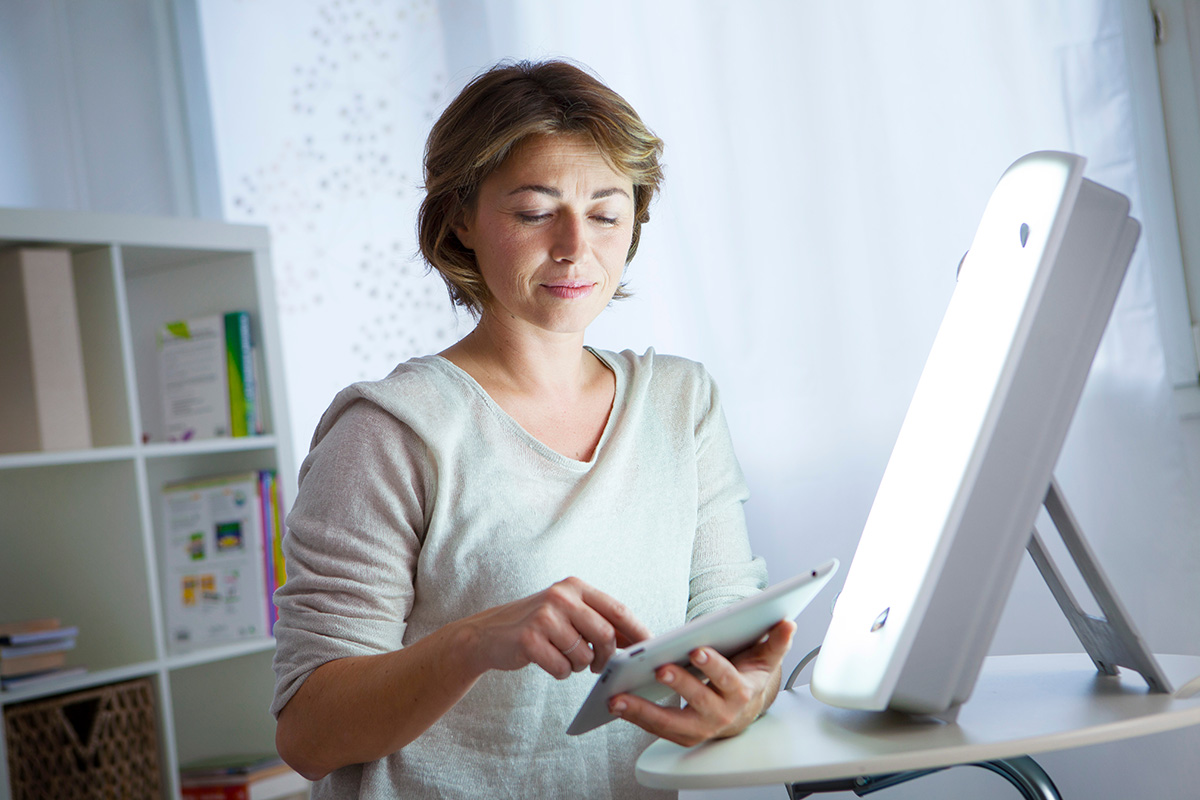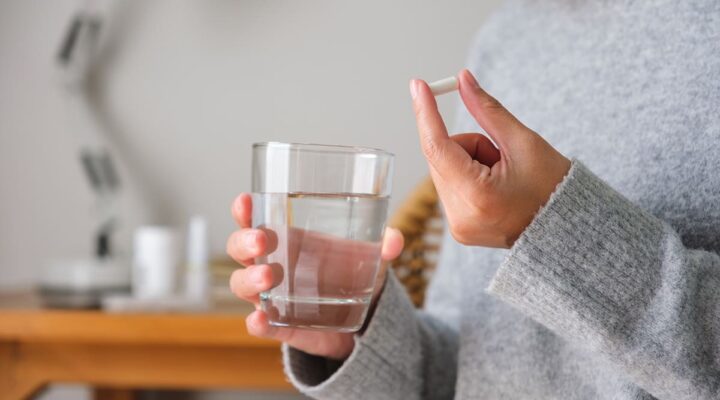Feeling the Winter Blues? How Light Therapy Can Help You to Manage Seasonal Affective Disorder

The end of the brilliant summer sunshine can leave us all feeling fairly flat. With the annual ritual of turning the clocks back too, the nights can feel extra dark and gloomy right now.
For around 6% of the population though, the change of the seasons is slightly more complex than lamenting the end of the hot weather. For some, it can bring on a form of clinical depression that has a clear cyclical pattern, with symptoms that are more apparent in the winter.
Known as Seasonal Affective Disorder (SAD), it’s a fairly common winter ailment that can be extremely debilitating. It can cause low energy, listlessness and lethargy. Left unchecked, it can interfere with day-to-day life.
One way to combat the winter blues? Give yourself a blast of mood-boosting light. Researchers have found that exposure to bright light can inhibit the production of sleep hormones that can dampen our mood.
How does light reduce the symptoms of SAD?
As a type of depression, there is still so much we don’t know about seasonal affective disorder. “The exact reason why people suffer is unknown and the same factors might affect everyone differently,” says Dr Qian Xu, Co-Founder and Medical Director at REDjuvenate Medical. Genetics and a family history of depression may play a role, and evidence tends to point towards a lack of natural sunlight being a trigger.
Low light levels can have a knock-on effect on three key things – changes to your circadian rhythm, serotonin levels and melatonin – which play an important role in regulating your happiness through the seasons.
Less daylight hours in winter means the body produces less of the ‘happy’ hormone serotonin, and more of the sleep hormone melatonin. “This can cause disruptions to your sleep patterns and mood,” notes Xu.
Your circadian rhythm can suffer too; the 24-hour sleep-wake cycle signals to the body when it’s time to switch off Netflix and rest. ”When your circadian rhythm is optimal, it promotes consistent and restorative sleep,” says Xu. “A decrease in sunlight can disrupt this internal clock and lead to feelings of sadness and depression.”

What is light therapy?
In an ideal world, we’d all be able to jet to sunnier climates when seasonal depression sets in. Light therapy is a simple, environmentally-friendly and cost-effective way to mimic natural daylight during the darker months.
Unfortunately, you can’t reap the benefits of this type of therapy by simply sitting under a regular household lamp. Light boxes – known as SAD lamps – are specially-designed tools that give a therapeutic dose of bright light. It’s thought that when bright light hits the retina in the eye, the brain receives a message to reduce the production of melatonin. This can improve energy and mood.
SAD lamps are around 10 times the intensity of a normal domestic light – around 5,00 to 10,000 lux (a measurement of light intensity). For this reason, it’s advisable to plug them in during the morning, as nighttime use can limit sleep hormones and trigger insomnia. To feel the effects, you’ll need to expose yourself to a sunlight lamp every day for around 30 minutes, to help regulate your sleep-wake cycle.
How to get a dose of light therapy
Getting out of bed can be difficult when you’re not greeted by the sun’s rays. Technology can help you to get your early morning energy back. Lamps such as a Beurer TL50 Desktop Daylight Lamp (£99.99, boots.com) simulate natural daylight to help regulate your sleep and wake hormones. There’s also the Lumie Zest SAD & wake-up light (£150, lumie.com) which uses a combination of light and sound to rouse you from slumber.
Apps can help too. SAD Light Box gradually shines a bright light into your room via your phone screen or tablet (£4.49, apps.apple.com) to make your alarm tone feel less brutal. Blue Energy Light is another handy download that can give you a blast of melatonin-inhibiting blue light before the working day begins (free, play.google.com).
Finally, it’s advisable to take a vitamin D supplement between the gloomier months of March and October. In the UK, winter sunlight doesn’t contain enough UVB radiation for our skin to manufacture vitamin D. Deficiency is fairly widespread, and can have a knock-on effect on our energy levels, so it’s always worth topping up in the winter.


















